Goliath Birdeater spiders are the largest spiders in the world, both in weight and size, but the giant huntsman spider does have a larger leg-span. These heavyweights can weigh in at over 6 oz., and be up to 11 in. across with their legs spread. Contrary to what their name would suggest, these spiders very rarely feed on birds. Read on to learn about the Goliath Birdeater.
Description of the Goliath Birdeater
Birdeaters are an incredibly large species of tarantula, and their leg-span can be up to 11 in. across. Like all tarantulas, they have a large abdomen and a smaller cephalothorax. This spider’s spinnerets are at the end of its abdomen, and its fangs are at the front of its cephalothorax. They have very large fangs, which can be up to 1.5 in. long. Each fang is equipped with venom, but it is mild and not dangerous to humans unless you are allergic.
Interesting Facts About the Goliath Birdeater
As the largest spider species, Birdeaters are a source of great human intrigue and fear. These arachnids are incredibly well adapted for survival, and actually have a number of defenses to protect them from being harmed.
- Grrr… – These spiders do not have any type of vocalizations, but that doesn’t mean they can’t make noise. If they are threatened they will rub the bristles on their legs together, which makes a humming sound. This is called “stridulating,” and is used as an attempt to scare potential predators.
- That Stings! – You would think that this spider’s greatest defense would be its large fangs, but these creatures employ a different protective feature when being eyed by a predator. They can rub and release the fine hairs from their abdomens. These urticating hairs irritate the mucous membranes of a predator, for example the nose, mouth, and eyes.
- What’s Not In a Name? – Though their name came from a researcher observing one eat a bird, Birdeaters don’t commonly feed on birds. Birds and other vertebrates can be difficult prey to capture. While they will catch and eat larger prey if given the opportunity, they usually eat more manageable meals like worms, insects, and amphibians.
- Hideaway – Another way to keep safe from predators is to have an effective hiding place. During the day these creatures retreat to the safety of their burrows. Once it gets dark they emerge and hunt for small prey.
Habitat of the Goliath Birdeater
Unlike some tarantula species, these creatures live mainly in humid rainforests of South America. More specifically, they live in upland rainforests. Some of their favorite habitats are marshes and swamps located in the dense forest. They dig burrows in the soft, moist soil and hide within them.
Distribution of the Goliath Birdeater
Goliath Birdeaters are native to northern South America. They are found in Brazil, Venezuela, Suriname, French Guiana, and Guyana. Their primary range is within the Amazon Rainforest. This species is found nowhere else in the world naturally, but they are kept and bred in captivity.
Diet of the Goliath Birdeater
Earthworms make up the vast majority of this species’ diet. They will feed on a wide variety of large insects, other worms, amphibians, and more. Some uncommon prey that can be consumed includes lizards, birds, rodents, large frogs, and snakes. They are opportunistic, and will feed on anything small enough for them to capture.
Goliath Birdeater and Human Interaction
These spiders do not pose any harm to humans, in fact they are sometimes kept as pets. They do have mild venom in their bites, and their urticating hairs can cause irritation if alarmed.
Humans pose a much greater threat to these spiders. In northeast South America, the local people will hunt and eat these arachnids. They are prepared by burning off the irritating hairs, and roasting the spider in banana leaves, similar to how other tarantula species are prepared. These spiders are also collected for the pet trade.
Domestication
Though they can be bred in human care, these spiders have not been domesticated in any way.
Does the Goliath Birdeater Make a Good Pet
A Goliath Birdeater can make a good pet to the right person, but it is not recommended for beginners. Because this spider’s maximum size is so large, it requires a much bigger habitat than other tarantula species, and also have larger fangs. If considering this species as a pet please do your research first!
Goliath Birdeater Care
This species should be kept in a relatively large habitat, preferably a tank that is at least 20 gallons. Because they rely on underground burrows for sleeping, they should have adequately deep substrate that allows them to dig easily, like peat moss or mulch. In addition to their burrows, they enjoy having multiple hiding places throughout the habitat. They can be fed a variety of insects, but should be provided with larger prey periodically, like mice.
Behavior of the Goliath Birdeater
Birdeaters are nocturnal, which means they are most active at night. They spend the daylight hours in the safety of their burrow, and emerge at night to hunt for prey. These creatures are solitary, and only interact with one another to reproduce. Unlike many other arachnids, females of this species do not attempt to kill and eat potential mates.
Reproduction of the Goliath Birdeater
Female spiders will build a web after breeding, and lay anywhere from 50 – 200 eggs in the web. The eggs are fertilized by sperm collected from mating after they pass out of her body, rather than being fertilized internally. She wraps up the eggs in the web, and carries the egg sack with her to protect it. The eggs will hatch in 6 – 8 weeks into tiny spiderlings. It can take 2 – 3 years before the young spiders reach sexual maturity and reproduce themselves.



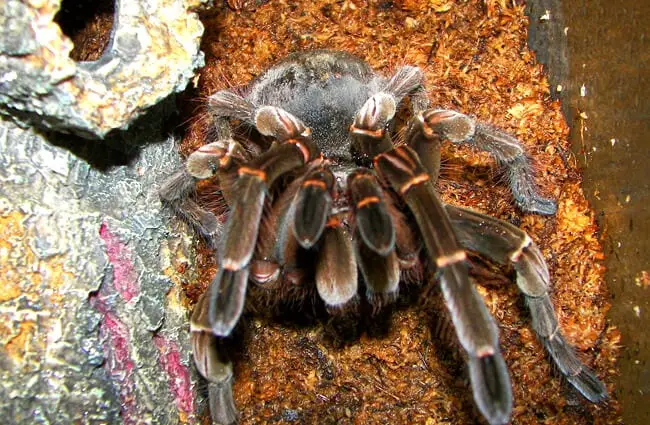
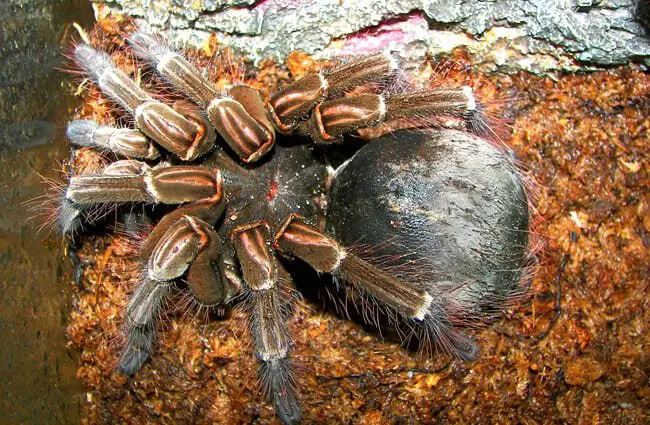
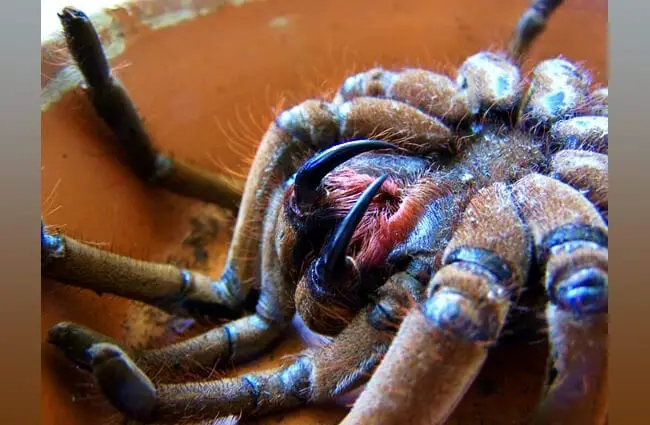

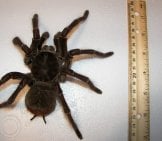


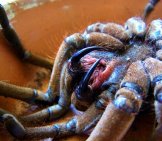
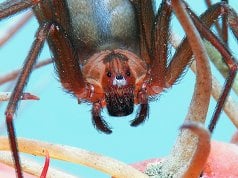
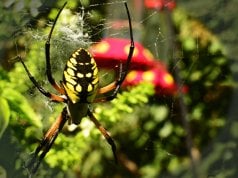











![Red Angus Closeup of a beautiful Red Angus cowPhoto by: U.S. Department of Agriculture [pubic domain]https://creativecommons.org/licenses/by/2.0/](https://animals.net/wp-content/uploads/2020/03/Red-Angus-4-100x75.jpg)

